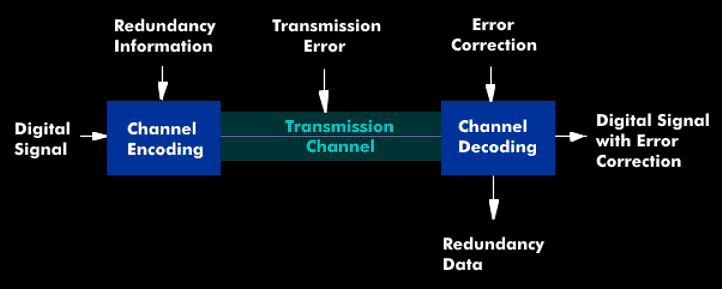channel encoding
Channel coding has the task of adapting the digital values to be transmitted to the properties of the channel or storage medium and protecting them against interference and bit errors. For this purpose, redundant information is added during channel coding for error correction.
The transmission-related properties such as the DC-free transmission level are achieved by means of appropriate line coding such as 5B6B coding, 4B3T coding or coded mark inversion( CMI).
Digital transmission errors become noticeable in the corruption of the logical states. A logical "1" becomes a logical "0" and vice versa. If possible, the receiver should detect and correct these errors. A distinction is made between error detection( EDC) and error correction( ECC). For error detection, additional redundant bits are transmitted in the data stream, which is why channel coding is also called forward error correction( FEC). In addition to Forward Error Correction, there is also Automatic Repeat Request( ARQ), where the receiver sends a repeat request to the transmitter when an error occurs.

